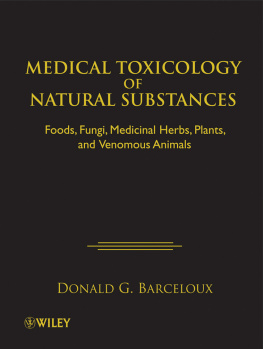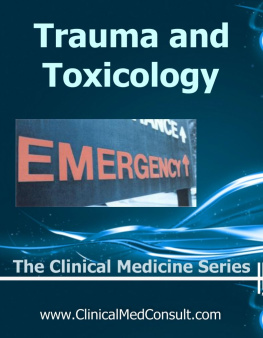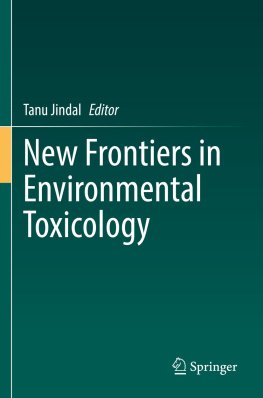Copyright 2008 by John Wiley & Sons, Inc. All rights reserved
Published by John Wiley & Sons, Inc., Hoboken, New Jersey
Published simultaneously in Canada
No part of this publication may be reproduced, stored in a retrieval system, or transmitted in any form or by any means, electronic, mechanical, photocopying, recording, scanning, or otherwise, except as permitted under Section 107 or 108 of the 1976 United States Copyright Act, without either the prior written permission of the Publisher, or authorization through payment of the appropriate per-copy fee to the Copyright Clearance Center, Inc., 222 Rosewood Drive, Danvers, MA 01923, (978) 750-8400, fax (978) 750-4470, or on the web at www.copyright.com. Requests to the Publisher for permission should be addressed to the Permissions Department, John Wiley & Sons, Inc., 111 River Street, Hoboken, NJ 07030, (201) 748-6011, fax (201) 748-6008, or online at http://www.wiley.com/go/permission.
Limit of Liability/Disclaimer of Warranty: While the publisher and author have used their best efforts in preparing this book, they make no representations or warranties with respect to the accuracy or completeness of the contents of this book and specifically disclaim any implied warranties of merchantability or fitness for a particular purpose. No warranty may be created or extended by sales representatives or written sales materials. The advice and strategies contained herein may not be suitable for your situation. You should consult with a professional where appropriate. Neither the publisher nor author shall be liable for any loss of profit or any other commercial damages, including but not limited to special, incidental, consequential, or other damages.
For general information on our other products and services or for technical support, please contact our Customer Care Department within the United States at (800) 762-2974, outside the United States at (317) 572-3993 or fax (317) 572-4002.
Wiley also publishes its books in a variety of electronic formats. Some content that appears in print may not be available in electronic formats. For more information about Wiley products, visit our web site at www.wiley.com.
Library of Congress Cataloging-in-Publication Data:
Barceloux, Donald G.
Medical toxicology of natural substances : foods, fungi, medicinal herbs, plants, and venomous animals / Donald G. Barceloux.
p. ; cm.
Includes index.
ISBN 978-0-471-72761-3 (cloth)
ISBN 978-0-470-33557-4 (epdf)
ISBN 978-1-118-38276-9 (epub)
ISBN 978-1-118-38278-3 (mobi)
1. Natural productsToxicology. I. Title.
[DNLM: 1. Plants, Toxic. 2. Animals, Poisonous. 3. Food Poisoning. 4. Furgi. 5. Medicinal Herbs. WD 500 B242m 2008]
RA1211.B285 2008
615.9dc22
2007051402
To my wife, Kimberly, your loving support and encouragement created the environment to write this book, and your patience allowed me to focus on this book away from what I enjoy mostbeing with you.
To my son, Colin, your computer expertise has been immensely helpful solving the technical issues in this book, and I admire the application of those skills to the development of your own company, Bookrenter.com.
To my daughter, Shannon, sharing your knowledge for the treatment of animals and your passion for becoming a veterinarian is a great joy for me.
FOREWORD
Men and women live in a miraculous world, surrounded by natural beauty, diverse environmental conditions and habitats, and evolutionary marvels. Within this intricate assembly of flora and fauna, many plant and animals have evolved that are more than passive inhabitants of this planet. They are endowed with substances both offensive and defensive, namely, potent toxins capable of slowly poisoning or rapidly subduing very large animals, including humans. In addition, modern man utilizes plant and animal products and extracts for commercial, medical, religious, and other purposes. These exposures range from naturopathic cures to a casual encounters with cactus spines during a wilderness expedition, from a divers encounters with the needles of sea urchins to covert politically motivated assassinations utilizing ricin from castor beans. Wild mushroom foragers grow old only if they are not too bold, while amateur aquarists who reach into their saltwater tanks learn about the toxicity under the cover of lionfish plumage.
We can never learn or know too much about how best to deal with natural toxins, whether we seek to eliminate them from our immediate food supply or treat acutely intoxicated victims. Furthermore, from the understanding of syndromes and therapies, we are offered insights into their possible therapeutic value. No matter what the ultimate fate of man, the seeds, spores, fangs, and venom glands will survive. While the relationship of toxins to humans may not be always be characterized as symbiotic, there will remain a coexistence that is predicted, yet always in part unpredictable.
The medical toxicology of natural substances is predicated upon their existence, which will diminish as humans continue to erode and consume their environment. Until then, we should continue to catalogue, record, evaluate, and teach. Medical practitioners and toxicologists should accept the responsibility to perpetuate these traditions because the wisdom of indigenous shamans is being lost as rapidly as the rainforests in which they reside.
What we do not seek to protect may soon disappear. It is my fervent wish that this book not only serve as a superb medical reference for those who seek to cure, but that all who read it are inspired to preserve the landscapes and seascapes that support the origination of everything that is natural and sustainable upon this Earth.
PAUL S. AUERBACH, MD, MS, FACEP, FAWM
Division of Emergency Medicine, Department of Surgery,
Stanford University School of Medicine
Stanford, California
PREFACE
Medical Toxicology of Natural Substances: Foods, Fungi, Medicinal Herbs, Plants, and Venomous Animals is designed to provide in-depth, evidence-based coverage of the most important natural toxins. This book is the first of a four volume series in Medical Toxicology, which will include drugs of abuse and psychoactive plants, occupational and environmental exposures, and pharmaceutical overdoses. Scientific knowledge in the field of Medical Toxicology increased considerably since I co-authored the First Edition of Medical Toxicology: Diagnosis and Treatment of Human Poisoning with the late Matthew J. Ellenhorn, published in 1988. That book was designed as an authoritative, concise volume for the immediate treatment of poisoning including natural toxins, pharmaceutical agents, and occupational exposures. In the last 20 years, sufficient interest has developed in natural toxins, food contamination, medicinal herbs, chronic occupational exposures, and bioterrorism to justify coverage of the field of Medical Toxicology by a book series rather than a single volume. Medical Toxicology of Natural Substances: Foods, Fungi, Medicinal Herbs, Plants, and Venomous Animals retains the consistent, formatted style I developed for the First Edition of Medical Toxicology: Diagnosis and Treatment of Human Poisoning . Once the reader is familiar with the templates used in my book series, the consistency of the organization allows the reader quickly to locate the appropriate information necessary for informed decisions regarding the sources, effect, regulation, recognition, and management of toxic exposures.
Conversions for length and temperature in metric and imperial systems are provided to ease the use of this book by an international readership, whereas the metric system for mass and concentrations are retained to limit any confusion about doses in the United States.






